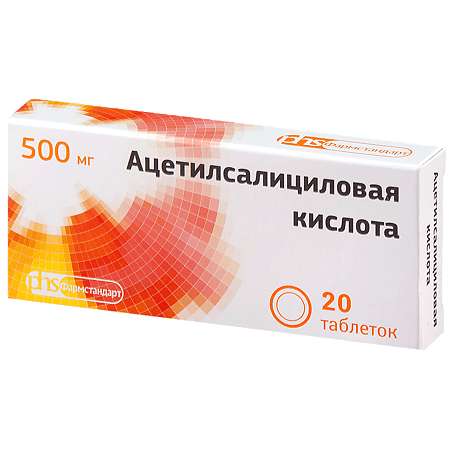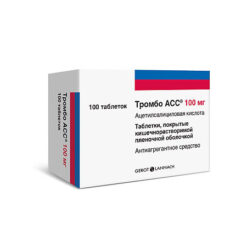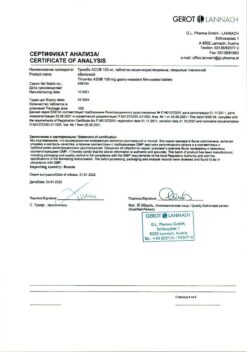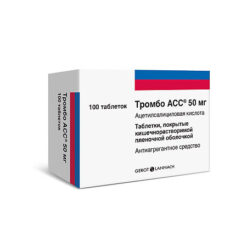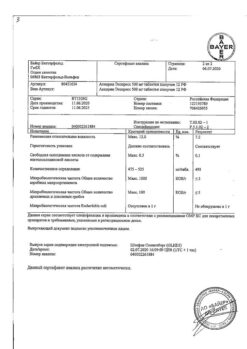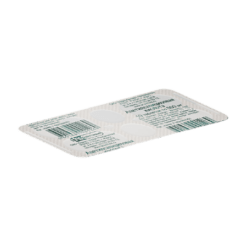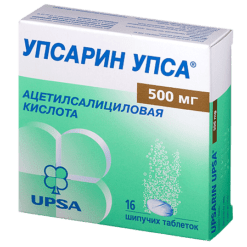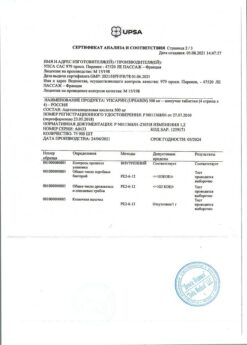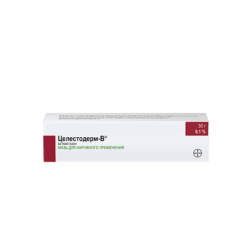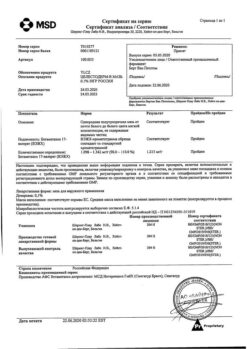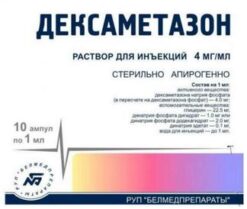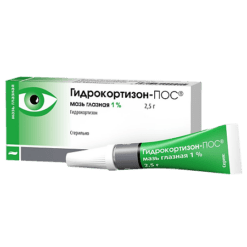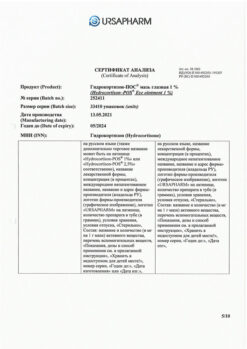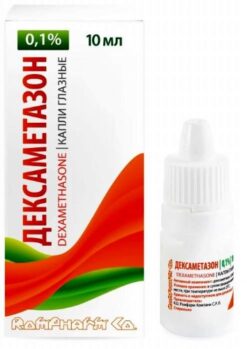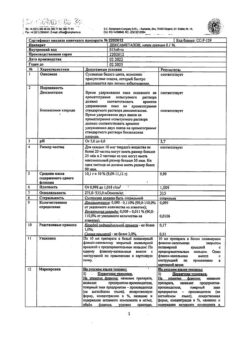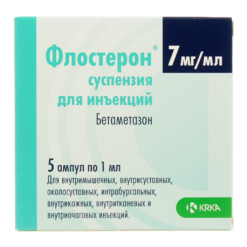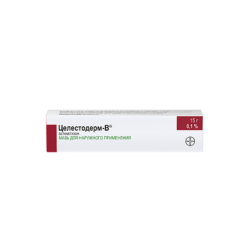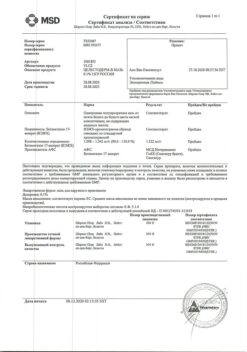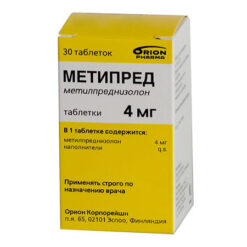No products in the cart.
Acetylsalicylic acid, tablets 500 mg 20 pcs
€1.54 €1.28
Description
Pharmgroup:
NSAIDs.
Pharmic action:
PNP; has anti-inflammatory, analgesic and antipyretic effects associated with indiscriminate inhibition of COX activity, and COX2, regulating the synthesis of PG. As a result, GHs are not formed, providing formation of edema and hyperalgesia. Decrease of GH content (mainly E1) in the thermoregulation center leads to decrease of body temperature due to dilation of skin vessels and increase of sweating.
The analgesic effect is due to both central and peripheral action.
Decreases aggregation, platelet adhesion and thrombosis by inhibiting the synthesis of thromboxane A2 in platelets. Antiplatelet effect lasts for 7 days after a single dose (more pronounced in men than in women).
Reduces mortality and risk of myocardial infarction in unstable angina.
Effective in primary prevention of cardiovascular diseases, especially myocardial infarction in men over 40 years, and in secondary prevention of myocardial infarction. At a daily dose of 6 g or more inhibits prothrombin synthesis in the liver and increases prothrombin time.
Increases plasma fibrinolytic activity and decreases the concentration of vitamin K-dependent clotting factors (II, VII, IX, X).
It increases the frequency of hemorrhagic complications during surgical interventions, increases the risk of bleeding during anticoagulant therapy.
Stimulates uric acid excretion (disrupts its reabsorption in the renal tubules), but in high doses. Blockade of COX, in the gastric mucosa leads to inhibition of gastroprotective Pg, which may cause mucosal ulceration and subsequent bleeding.
Less irritating effect on the mucous membrane of the gastrointestinal tract are the drug forms containing buffer substances, enteric coating, and special “effervescent” forms of pills.
Indications
Indications
Symptomatic treatment of pain: headache (including withdrawal symptoms), toothache, sore throat, back and muscle pain, joint pain, pain during menstruation.
Increased body temperature during colds and other infectious and inflammatory diseases (in adults and children over 15 years of age).
Pharmacological effect
Pharmacological effect
Pharmaceutical group:
NSAIDs.
Pharmaceutical action:
NSAIDs; has anti-inflammatory, analgesic and antipyretic effects associated with indiscriminate inhibition of the activity of COX and COX2, which regulate the synthesis of PG. As a result, PGs are not formed, which ensure the formation of edema and hyperalgesia. A decrease in PG content (mainly E1) in the thermoregulation center leads to a decrease in body temperature due to dilation of skin vessels and increased sweating.
The analgesic effect is due to both central and peripheral effects.
Reduces platelet aggregation, adhesion and thrombus formation by suppressing the synthesis of thromboxane A2 in platelets. The antiplatelet effect lasts for 7 days. after a single dose (more pronounced in men than in women).
Reduces mortality and the risk of developing myocardial infarction in unstable angina.
Effective in the primary prevention of cardiovascular diseases, especially myocardial infarction in men over 40 years of age, and in the secondary prevention of myocardial infarction. In a daily dose of 6 g or more, it suppresses prothrombin synthesis in the liver and increases prothrombin time.
Increases fibrinolytic activity of plasma and reduces the concentration of vitamin K-dependent coagulation factors (II, VII, IX, X).
Increases the incidence of hemorrhagic complications during surgical interventions and increases the risk of bleeding during anticoagulant therapy.
Stimulates the excretion of uric acid (impairs its reabsorption in the renal tubules), but in high doses. Blockade of COX in the gastric mucosa leads to inhibition of gastroprotective Pg, which can cause ulceration of the mucous membrane and subsequent bleeding.
Dosage forms containing buffer substances, enteric coating, as well as special “effervescent” forms of tablets have a lesser irritating effect on the gastrointestinal mucosa.
Special instructions
Special instructions
Acetylsalicylic acid may cause bronchospasm, an attack of bronchial asthma or other hypersensitivity reactions. Risk factors are the presence of bronchial asthma, nasal polyps, fever, chronic bronchopulmonary diseases, a history of allergies (allergic rhinitis, skin rashes).
Acetylsalicylic acid may increase the tendency to bleeding, which is associated with its inhibitory effect on platelet aggregation. This should be taken into account when surgical interventions are necessary, including minor interventions such as tooth extraction.
Before surgery, to reduce bleeding during surgery and in the postoperative period, you should stop taking the drug 5-7 days in advance and notify the doctor.
Children should not be prescribed medications containing acetylsalicylic acid, since in the case of a viral infection the risk of Reye’s syndrome increases. Symptoms of Reye’s syndrome are prolonged vomiting, acute encephalopathy, and liver enlargement.
If it is necessary to use the drug during lactation, breastfeeding should be discontinued.
In the treatment of vascular diseases, the daily dose of acetylsalicylic acid is from 75 to 300 mg.
Acetylsalicylic acid reduces the excretion of uric acid from the body, which can cause an acute attack of gout in predisposed patients.
There was no effect of taking the drug on driving a vehicle or other mechanisms.
Active ingredient
Active ingredient
Acetylsalicylic acid
Composition
Composition
1 tablet contains:
active ingredient:
acetylsalicylic acid 500 mg.
excipients:
potato starch,
stearic acid,
citric acid,
talc.
Contraindications
Contraindications
Hypersensitivity to acetylsalicylic acid and other non-steroidal anti-inflammatory drugs or other components of the drug;
erosive and ulcerative lesions of the gastrointestinal tract (in the acute phase), gastrointestinal bleeding;
bronchial asthma induced by taking salicylates and non-steroidal anti-inflammatory drugs;
hemorrhagic diathesis;
– combined use of methotrexate at a dose of 15 mg per week or more;
– pregnancy, breastfeeding period;
a combination of bronchial asthma, recurrent polyposis of the nose and paranasal sinuses and intolerance to acetylsalicylic acid;
children under 12 years of age (for this dosage form)
The drug is not prescribed to children under 15 years of age with acute respiratory diseases caused by viral infections due to the risk of developing Reye’s syndrome (encephalopathy and acute fatty liver degeneration with acute development of liver failure).
With caution
With concomitant therapy with anticoagulants, gout, gastric ulcer and/or duodenal ulcer (history), including chronic or recurrent peptic ulcer, or episodes of gastrointestinal bleeding; renal and/or liver failure, glucose-6-phosphate dehydrogenase deficiency; hyperuricemia, bronchial asthma, chronic obstructive pulmonary disease, hay fever, nasal polyposis, drug allergies, concomitant use of methotrexate at a dose of less than 15 mg/week, pregnancy.
Side Effects
Side Effects
From the gastrointestinal tract: abdominal pain, heartburn, nausea, vomiting, obvious (vomiting with blood, tarry stools) or hidden signs of gastrointestinal bleeding, which can lead to iron deficiency anemia, erosive and ulcerative lesions (including perforation) of the gastrointestinal tract, isolated cases – impaired liver function (increased liver transaminases).
From the central nervous system: dizziness, tinnitus (usually signs of overdose).
From the hematopoietic system: increased risk of bleeding, which is a consequence of the effect of acetylsalicylic acid on platelet aggregation.
Allergic reactions: skin rash, anaphylactic reactions, bronchospasm, Quincke’s edema.
If such symptoms appear, it is recommended to stop taking the drug and immediately consult your doctor.
Interaction
Interaction
Combined use:
with methotrexate at a dose of 15 mg per week or more: the hemolytic cytotoxicity of methotrexate increases (renal clearance of methotrexate decreases and methotrexate is replaced by salicylates due to plasma proteins);
with anticoagulants, for example, heparin: the risk of bleeding increases due to inhibition of platelet function, damage to the gastrointestinal mucosa, displacement of anticoagulants (oral) from connection with blood plasma proteins;
with other non-steroidal anti-inflammatory drugs: as a result of synergistic interaction, the risk of ulcers and gastric bleeding increases;
with uricosuric drugs, for example benzbromarone: reduces the uricosuric effect;
with digoxin: digoxin concentration increases due to decreased renal excretion;
with hypoglycemic drugs, such as insulin: the hypoglycemic effect of hypoglycemic drugs increases due to the hypoglycemic effect of acetylsalicylic acid;
with thrombolytic drugs: the risk of bleeding increases;
with systemic glucocorticosteroids, excluding hydrocortisone, used as replacement therapy for Addison’s disease: when using glucocorticosteroids, the level of salicylates in the blood decreases due to increased excretion of the latter;
with angiotensin-converting enzyme inhibitors: glomerular filtration is reduced due to inhibition of prostaglandins and, as a result, the antihypertensive effect is reduced;
with valproic acid: the toxicity of valproic acid increases;
with ethanol (alcoholic drinks): the risk of damaging effects on the gastrointestinal mucosa increases and the risk of gastrointestinal bleeding increases;
enhances the effects of narcotic analgesics, thrombolytics and platelet aggregation inhibitors, sulfonamides (including co-trimoxazole);
increases the concentration of barbiturates and lithium salts in plasma;
antacids containing magnesium and/or aluminum slow down and impair the absorption of acetylsalicylic acid;
myelotoxic drugs increase the manifestations of hematotoxicity of the drug.
Overdose
Overdose
Symptoms: Moderate overdose: nausea, vomiting, tinnitus, hearing loss, headache, dizziness and confusion. These symptoms disappear when the dose of the drug is reduced.
Severe overdose: fever, hyperventilation, ketoacidosis, respiratory alkalosis, metabolic acidosis, coma, cardiogenic shock, respiratory failure, severe hypoglycemia.
Treatment: hospitalization, gastric lavage, activated charcoal, monitoring of acid-base balance, alkaline diuresis in order to obtain a urine pH between 7.5-8 (forced alkaline diuresis is considered achieved if the concentration of salicylate in the blood plasma is more than 500 mg/l (3.6 mmol/l) in adults or 300 mg/l (2.2 mmol/l) in children), hemodialysis, replacement of fluid loss, symptomatic therapy.
Storage conditions
Storage conditions
Store in a dry place, at a temperature not exceeding 25C.
Shelf life
Shelf life
4 years.
Manufacturer
Manufacturer
Pharmstandard-Leksredstva, Russia
Additional information
| Shelf life | 4 years. |
|---|---|
| Conditions of storage | Store in a dry place at a temperature not exceeding 25C. |
| Manufacturer | Pharmstandard-Leksredstva, Russia |
| Medication form | pills |
| Brand | Pharmstandard-Leksredstva |
Other forms…
Related products
Buy Acetylsalicylic acid, tablets 500 mg 20 pcs with delivery to USA, UK, Europe and over 120 other countries.

